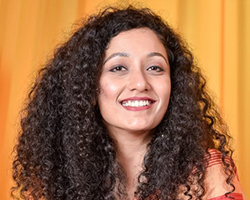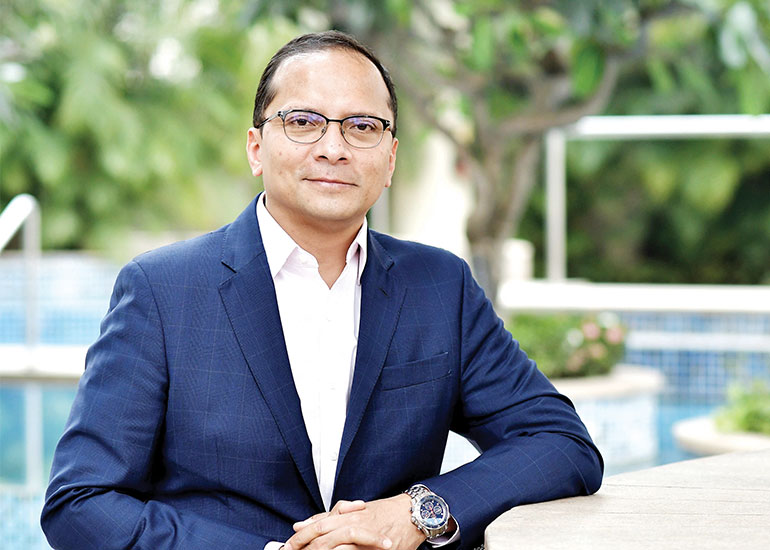Q] From heading a single agency-Contract Advertising, to leading a holding company in India six years ago- Havas, and now overseeing 10 markets of the Group, what led to this meteoric rise of ‘Brand Rana’?
Big conglomerates, be it Apple or Tata, are chasing the win through their various business verticals or disciplines. I learnt at an early stage of my career that if as an agency you want to be a reason for the success of your client and the end consumer, then you must own a range of expertise. I think Contract lacked the willingness or ability to scale up. It’s clear that the scale-up has happened at Havas and we are collectively proud of it. I can officially say that India is amongst the Group’s top 10 markets which shows that we are in good shape. Expectations will get bigger, just like the investments, and the growth will continue. The acquisitions will be more focused now because we have covered the space.
Q] Interestingly, you’re the only holding company CEO in India hailing from a creative background, as the majority of the others are from media agencies, the money spinners of the Group. Was the journey to the top more challenging for you by that logic?
My mind still functions as a creative suit and unfortunately, I get excited by ads and not media plans. However, having worked in the Radio industry for around seven years has helped me bag media exposure. Today, I’m probably the only CEO who’s managing all operations across all regions. For me it’s not about media or creative, I look at the different regions as villages. I execute media operations in India, Thailand, Indonesia, creative operations in Malaysia. I am also discerning the workings of Japan and South Korea, and what I can build there.

Q] What is your vision for Havas in India?
I remember meeting Yannick Bolloré when we had started, and he told me that the only brief was to build India the way it should be built, without being too aggressive. Because we were part of a family-owned business, it’s not just about assuaging the shareholders, it’s also about continuing the legacy of the Bolloré family, which will be completing 200 years in 2035. We at Havas follow a flat structure, therefore when the pitches are happening here, the global business team works with the India team. India is now coined into the network everywhere; it’s not a separate entity lying under Havas India. These are some of the alterations introduced by me over the years. I strongly believe you don’t build something like an anomaly and say ‘India is different’. We are not different; we are as flat as any other global country, donning the same clothes, savouring the same food, and taking the same flights. We are absolutely similar and we need to clear the misnomer around it. Our goal has always been to keep it as flat and straightforward as possible. We’re part of the global ecosystem, which is why at Havas in India there are some seven companies with CEOs and MDs who have direct global reporting because we don’t have a region-based setup.
Q] Which are your strongest and weakest markets amongst the 10 you are handling now?
Our strongest market is Singapore, while the most challenging one in terms of both business and size would be Cambodia. I have set Singapore, Thailand, Indonesia, Malaysia, and Vietnam as my top priority markets. Philippines is good, and Japan is doing surprisingly well for a market largely dominated by three big local giants. My focus will be growth and a bit of consolidation with a clear vision of what Yannick wants to do if he wants Havas to be listed, it might be an independent entity by early next year. And Asia will play a very important role.

Q] How much do these 10 markets contribute to the global revenue of Havas currently?
If we combine media and creative business of all the nine markets, it would be the same size as India’s business.
Q] When I interviewed you last year, you were confident that Havas India will be among the top four holding companies in the country by 2023-end. Has that happened?
Yes, we should be in the top 4, we will be sure of it when the numbers come out in March. We have broken into Havas’ global top 10 growth markets, and will also be in the top holding companies list in India alongside WPP, IPG and Publicis. Nothing against Omnicom or Dentsu, but we are witnessing an upshift because of sheer organic growth and acquisitions, both PR Pundit and Pivot Roots have been huge acquisitions, while some of our existing businesses like Shobiz have also grown exponentially, Conran has been widely successful, Havas Media has done phenomenally well in 2023, the numbers have gone through the roof. Prose on Pixels, our high-end digital studio in Chennai much like Hogarth, a global production company will go from 25 to 200 people in the next few months. We’ve been growing at over 30% year-on-year (2022 and 2023), and even during the two years of COVID, we grew at around 25%.
Q] What are your expectations for the next year?
Havas India will continue to grow at over 30%. Some of the businesses will continue to face challenges like our pureplay creative agency, as the industry is under a bit of pressure. We, however, have surrounded ourselves with strong businesses and expertise.
Q] With 19 agencies in your fleet, what is the challenge you face— to make them individually attractive to clients or integrating them?
It has to be both. There’s a classic line from Y&R that says, ‘best alone, better together’. I use it a lot. In my individual capacity I need to be the best in what I do, but I also have to work alongside the various CEOs, CCOs and CSOs to make sure everything is perfect. I am trying to bring them together under one roof, the biggest successful village in India will be in Bangalore where most agencies will come together by January, 2025, and then in June, 2025 in Delhi. It is a big challenge in Bombay because I have 1200 people sitting in various parts of the city. Jaibeer Ahmad, in the capacity of Chief Transformation Officer, is working with me to ensure that all these companies are sharing ideas, going for pitches together, and initiating conversations. Upon studying our top 50 clients, we inferred that only two of them are working with multiple agencies of ours. There is a massive opportunity to cross-sell.
Q] While the media part of your business is doing well by your own admission, the creative spectrum is missing the recognition needed in the shape of awards like Cannes Lions. Why so?
A gap was created after Bobby Pawar left, now Anupama is settled and has her team in place. She is also working very closely with Joji Jacob in Singapore, one of the most awarded creatives who is also our regional council head. This year, a lot of focus lies on bagging awards across the region and India. We’re quite confident that we’ll have some entries for this year’s Cannes Lions. And one piece of work that is not out yet has a very strong chance of winning.
Q] Are you looking at more acquisitions this year?
We have 19 agencies with special divisions, and there are four more coming up. I am now looking at a hardcore digital/social agency, a CX agency which will aid in end-to-end transformation, whether it’s technology or MarTech. with generative AI conversations within. I am also looking at a high-end consultancy firm, similar to our global initiative, Gate One. When brands undergo transformations, they call either consultants or the Big 4, leaving agencies to only tackle executions. I want to bridge this gap and create conversations.
























